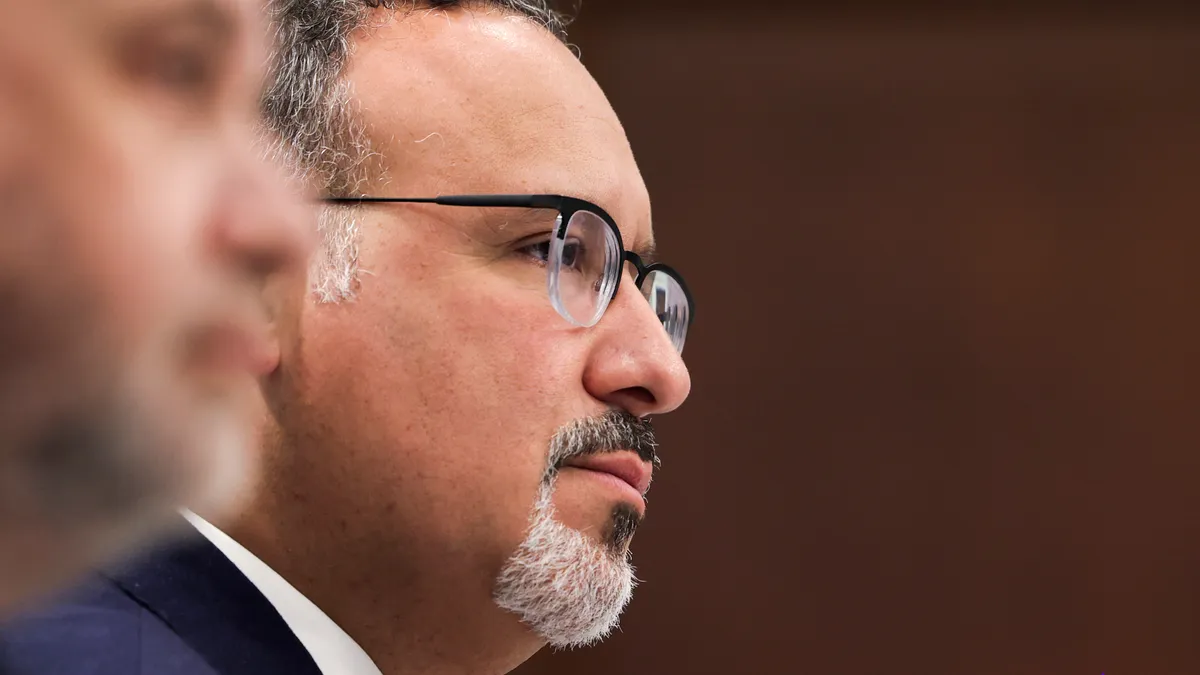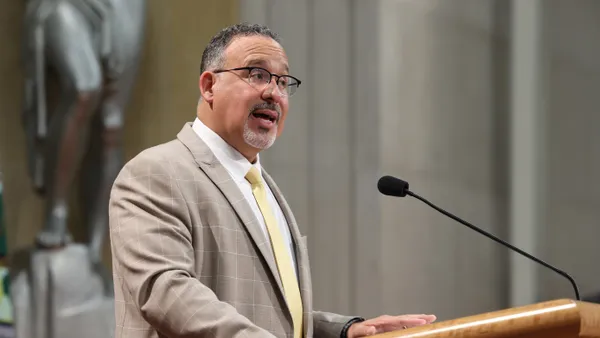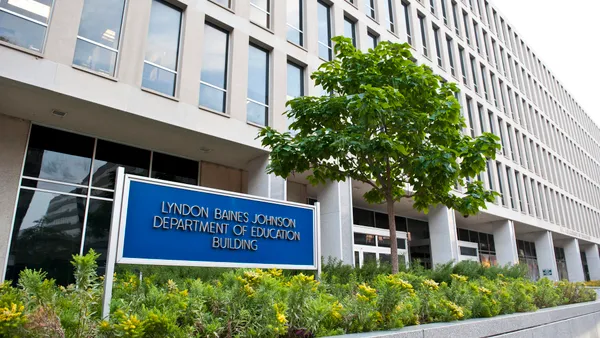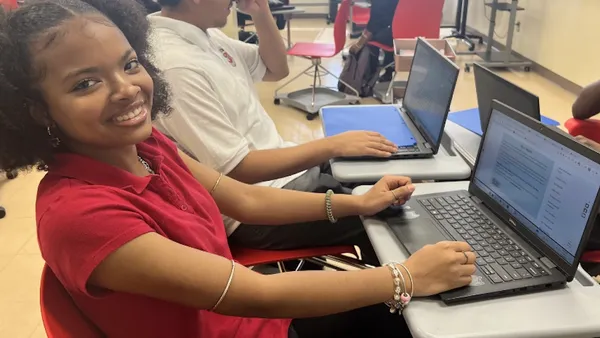Dive Brief:
- Half of college students (49%) begin their postsecondary education at a two-year institution, making it critical for those colleges to offer support in the first year, according to a new report from the Jack Kent Cooke Foundation examining first-year practices at 174 public two-year colleges. Stronger support in the first year can lead to more fulfilling postsecondary careers that align with students' academic abilities and aspirations.
- Four in 10 programs surveyed had standalone first-year experience (FYE) programs, coordinating an average of seven support offerings such as orientations, seminars, academic and professional advising, learning communities and social events. Institutions without FYE programs had five such offerings.
- Some colleges offer programming specific to high-performing students, such as honors programs, merit scholarships, transfer-out support and specialized career services. None of the institutions studied offered programming serving the specific needs of high-achieving first-year students who also had financial need.
Dive Insight:
Dual enrollment is gaining popularity as a way for high-achieving high school students to get a jump-start on college while saving money on tuition.
The Community College Research Center looked at enrollment and degree records for more than 200,000 students who took dual enrollment classes in the fall of 2010, tracking them through the summer of 2016. Nine in 10 (86%) matriculated on to college, but the type of institution attended and their completion rates vary greatly by state.
Of dual-enrollment students who attended a community college after high school, nearly half (46%) nationwide earned a credential within five years. Among states, however, the share ranged from 28% in West Virginia to 64% in Florida, the CCRC found. Completion rates were higher for dual enrollment students who attended a four-year college after high school.
However, the CCRC notes, colleges and state education agencies have failed to monitor what kinds of students enroll in dual-enrollment programs, which colleges the students matriculate on to and how many students complete a degree. Without sufficient research into what these students need to be successful, two-year institutions will miss out on opportunities to help them reach their full potential — especially as high college costs have some high-achieving students giving their local community college a closer look.
Another strategy to support high-achieving community college students is to help them choose a major and transfer institution as early as possible, according to a two-part report (here and here) from the American Talent Initiative.
Students who do not seek academic counseling early risk taking classes that do not transfer to their four-year institution of choice. The creation of stronger partnerships between two-year and four-year institutions can also ensure that students are identifying their life and career goals and enrolling in the appropriate courses that are sure to transfer.














